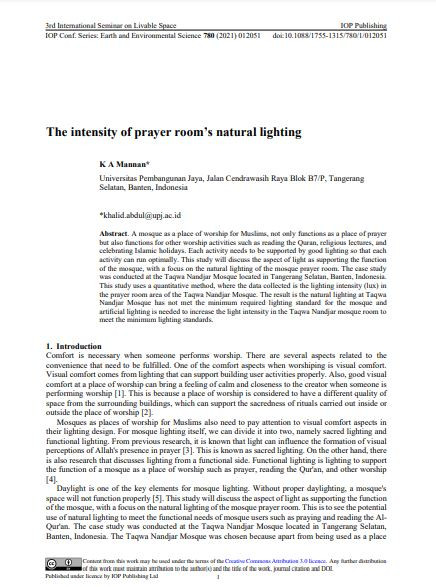
A mosque as a place of worship for Muslims, not only functions as a place of prayer but also functions for other worship activities such as reading the Quran, religious lectures, and celebrating Islamic holidays. Each activity needs to be supported by good lighting so that each activity can run optimally. This study will discuss the aspect of light as supporting the function of the mosque, with a focus on the natural lighting of the mosque prayer room. The case study was conducted at the Taqwa Nandjar Mosque located in Tangerang Selatan, Banten, Indonesia. This study uses a quantitative method, where the data collected is the lighting intensity (lux) in the prayer room area of the Taqwa Nandjar Mosque. The result is the natural lighting at Taqwa Nandjar Mosque has not met the minimum required lighting standard for the mosque and artificial lighting is needed to increase the light intensity in the Taqwa Nandjar mosque room to meet the minimum lighting standards.
Mannan, K. A. “The intensity of prayer room’s natural lighting.” In IOP Conference Series: Earth and Environmental Science, vol. 780, no. 1, p. 012051. IOP Publishing, 2021.
I agree to the terms outlined below:
You agree to upload and assign Mosqpedia Database the rights to use the content worldwide and in perpetuity across all current and future media platforms. Mosqpedia Database may edit, copy, adapt and translate your contribution.
The content will be distributed under the Creative Commons Attribution-Deed – Attribution-NonCommercial-NoDerivatives 4.0 International – Creative Commons
All data will be stored in line with data protection regulations.